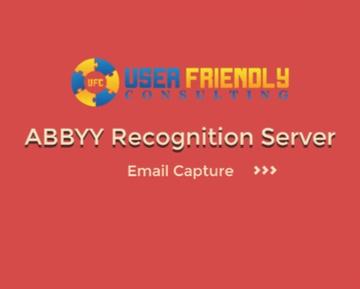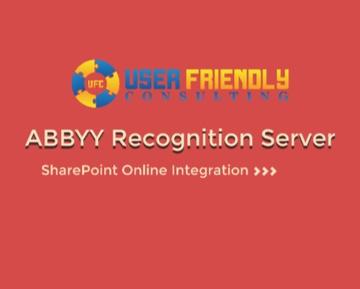Watch our video on how to configure stages (also known as queues) within ABBYY FlexiCapture Distributed.
Hello. Today I am going to show you how to set up a custom stage in ABBYY FlexiCapture Distributed.
Now, the first thing we want to do is open our project set up station, which you see in front of you. We’re going to go to the project menu and hit our project properties option. You can see right here that I have my schema on the workflow tab set to simple. In order to set up a new stage, or queue, sometimes we call them, you will need to select the advanced option. From here you can hit the plus stage. Now, what I recommend you doing is, you hit the plus stage button on a stage that is similar to the stage that you want to set up. For example, if we’re setting up a queue for invoices that are greater than 100 dollars, which will be our sample today, then we’re going to hit the verification, because that’s a verification queue. What we would do is select that and then hit the plus stage. When we hit the plus stage, there are a lot of different options here that I’m not going to go into every single one of these. I would recommend that you read the help information and documentation for that.
We’re going to set up a verification queue, or stage. We’re going to hit okay and then we’re going to give this a name and what we’ll call it is over 100. We’ll say that this is our over 100 dollar invoice queue. We’re going to say that this is on the verification. We want to use that tool and then you can see we have other customizable features that we won’t dive into everyone of these, but you can feel free to check them out on your own. We’re going to name the queue and then we’re going to hit the field set. In the field set option we have the ability to limit what fields are displayed to the user. For this video, we will limit the fields just to show you how that’s done. We’re going to show, maybe, everything by the vendor and perhaps a total. Then that way, everybody who uses this queue can see those fields.
Next, we’ll have an entry condition. These are how documents get into the queue, or stage. By default, we have a list of rules that we’re actually not going to use. This is really up to you to determine when you’re going to be processing a stage, but this is a good example of one that we would not use it. So, we’re going to delete the top tree node and then we’ll hit the plus. When we hit the plus rule, it’s going to ask us for a name, so we’re going to say this is the over 100 rule and you can see the condition type. There’s two different options. You can either create a standard rule or you can create a script. When you create a script, you have the ability to use the different languages that ABBYY already produces for us within their editor, but for today’s demo, we’re going to show just a standard rule. The rule will be implemented if the following condition is satisfied, and then obviously, these are just logic statements that you’ll want to check. What we’re going to say is that the condition is that the field must satisfy an expression.
From here, we select which rule, and these are your document definitions, and we’re going to say that the total field is more or equal to 100. So, if we were reading this, we would say, look, that invoice total has to be greater than or equal to 100 in order for an invoice to qualify for this queue. Once we’re done, we will hit okay.
The next step is the exit route. Where do you want the document to go after it’s done with this stage? Now, I’m going to just slide this over here to the right a little bit, so you can see the workflow schema here. So, what we’re going to tell, by default, is just to route it through the traditional schema. You have the ability, however, to customize what stage you jump to once this is over, but we’re not going to control any of that.
Next we have roles. Roles determines who gets access to this stage or queue. We’re going to create a new rule. We’re going to call this the, actually, let’s call it the over 100 users. So, these are users that we will put into this role. Consider it like a group and these folks will have the ability to see the queue and go from there. Okay? So, that is the workflow stage. We selected the fields, the conditions to entry and exit, and then we set up the role which will determine who gets access to those documents. We can simply hit okay. You see it did put it above it. I’m going to have it just move this down one. So, the document will go into a verification [inaudible 00:04:59], a queue, a standard verification queue, and then it will go into our over 100 queue and from there, for example, a manager or a supervisor, would be able to approve an invoice if that was what we’re looking to do here.
Now, I’m going to pause because I want you to understand where user roles are determined and assigned. If you are in the administration console, the web-based administration console in ABBYY FlexiCapture Distributed, you will go to permissions. Permissions will lead you to this page. You will select the user and then from here, you will determine which permissions they get assigned to. Well, we created one called over 100, so what I need to do now is apply and save those options and then if I refresh this screen, you see down here below, the over 100 users is now there. This is where you determine what user gets access to what queue or stage. We’re going to say, Travis has access to this stage and we will save it. Then, of course, you can see here, the permissions that are outlined. I’m an administrator, so I would, by default, have those queues, but if for some reason you wanted to restrict a user to a queue or just a subset of queues, you can absolutely do that. Once again, queues are controlled via permissions through the administration and monitoring console in ABBYY FlexiCapture Distributed.
So, now that we have the stage set up, what I’m going to do is, I’m going to put a document into our verification queue. I can simply do that by dragging and dropping a document into our processed, or I’m sorry, into our ABBYY import hot folder, which I will do in just a second here. So, I’m just going to process several different invoices and we’ll just watch those get picked up here in a second. You can see they are gone and so I will open up our verification queue. This is our processing server. I will actually open up the verification client and you see now, I have access to a over 100 users queue. But first, if you recall from our workflow, it has to go through verification first. So, I’m going to open this up as a normal verification user. You can see the queue that I also have access to, so the document first comes into verification and we will look at these and we’re just going to go ahead and approve them. You can review our other videos on our website or through YouTube, that explains how this information’s captured, but for now, we’re just going to close the task, which will move the task the next step through the workflow.
Once we hit the close the task, we refresh, now you’ll see, we have a task in the over 100. All of those must have been over 100. You see, now I have a limited subset of fields, because in my properties I determined what this queue will have access to as far as the fields go. I think we’ve told them that we could have vendor and amount. If we just flip through these, you can kind of see those rules there. So, that’s the idea. Now, we can close the task and now that task will go through the export options. So, that’s how simple it is. Once again, to review this, it’s all about using the workflow settings. We created an over 100 rule and we set the different fields that they can see in the queue or stage and then what causes us to enter and exit that queue.
So, that is how staging is controlled and then from here the document would properly follow its exit route, which for us, is then moving on to export. That is how you set up a queue in ABBYY FlexiCapture Distributed. If we can answer any of your questions, please let us know and let us know how we can be of service to you. Thank you so much.





